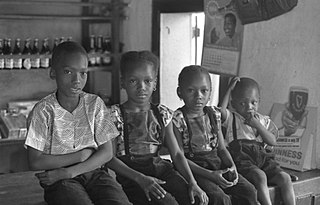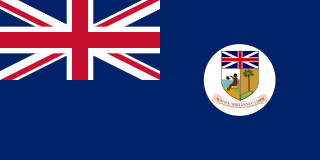 |
|---|
General elections were held in Sierra Leone Colony and Protectorate for the first time on 28 October 1924. [1] The National Congress of British West Africa won all three seats. [2]
 |
|---|
General elections were held in Sierra Leone Colony and Protectorate for the first time on 28 October 1924. [1] The National Congress of British West Africa won all three seats. [2]
The 1924 constitution introduced a 22-member Legislative Council, of which twelve members were government officials. The other ten members included two appointed Europeans representing commercial interests, three elected Africans from the Colony, three appointed paramount chiefs from the Protectorate (two Mende and one Temne), one representing each province, and two appointed Africans from the Colony. [3]
The three elected seats were elected from single-member constituencies, two urban and one rural. Voting was restricted to literate Africans over the age of 21 who owned at least £10 of property in the urban constituencies or £6 in the rural constituency. From the population of approximately 25,000, only 1,866 people registered to vote; 1,016 in Freetown, 511 in the other urban constituency and 339 in the rural constituency. [3]
| Constituency | Elected member | Party | Votes |
|---|---|---|---|
| First Urban | Ernest Beoku-Betts | National Congress of British West Africa | 607 |
| Second Urban | Herbert Bankole-Bright | National Congress of British West Africa | 562 |
| Rural | Albert Tuboku-Metzger | National Congress of British West Africa | 173 |
| Source: Wyse | |||
The unsuccessful candidates included former mayor of Freetown Samuel Barlatt (373 votes) and John Songo-Davies (199 votes). Only 12 of the votes cast were invalid. [1]
Following the elections, Governor Charles Turner appointed three paramount chiefs; Bai Kumba of the Mande Chiefdom, Bai Kompa of Koya Temne and Tucker of the Nangoba Bullom chiefdom. [4]

Sierra Leone, officially the Republic of Sierra Leone, is a country on the southwest coast of West Africa. It shares its southeastern border with Liberia, and the northern half of the nation is surrounded by Guinea. Covering a total area of 71,740 km2 (27,699 sq mi), Sierra Leone has a tropical climate, with diverse environments ranging from savanna to rainforests. The country has a population of 7,092,113 as of the 2015 census. Freetown is the capital and largest city. The country is divided into five administrative regions, which are subdivided into 16 districts.
Sierra Leone first became inhabited by indigenous African peoples at least 2,500 years ago. The Limba were the first tribe known to inhabit Sierra Leone. The dense tropical rainforest partially isolated the region from other West African cultures, and it became a refuge for peoples escaping violence and jihads. Sierra Leone was named by Portuguese explorer Pedro de Sintra, who mapped the region in 1462. The Freetown estuary provided a good natural harbour for ships to shelter and replenish drinking water, and gained more international attention as coastal and trans-Atlantic trade supplanted trans-Saharan trade.

Sierra Leone is a country located in West Africa, known officially as the Republic of Sierra Leone.

Freetown is the capital and largest city of Sierra Leone. It is a major port city on the Atlantic Ocean and is located in the Western Area of the country. Freetown is Sierra Leone's major urban, economic, financial, cultural, educational and political centre, as it is the seat of the Government of Sierra Leone. The population of Freetown was 1,055,964 at the 2015 census.

The government of Sierra Leone is the governing authority of the Republic of Sierra Leone, as established by the Sierra Leone Constitution. The Sierra Leone government is divided into three branches: the executive, legislative and the judiciary. The seat of government of Sierra Leone is in the capital Freetown.

Parliament of Sierra Leone is the legislative branch of the government of Sierra Leone. It is principally responsible for making laws. The Sierra Leone parliament consists of 149 members, of which 135 members are directly elected from across Sierra Leone's 16 districts, while 14 are paramount chiefs appointed from the 14 rural districts. The parliament is led by the Speaker of the House; the position is currently held by Abass Bundu of the Sierra Leone People's Party. The current elected 135 ordinary members of parliament are composed of members of the All People's Congress and the Sierra Leone People's Party which are the two largest political parties in Sierra Leone.
Edward Mohamed Turay was a Sierra Leonean politician and diplomat. He was leader of the opposition All People's Congress (APC) from 1996 to 2002. He was the Sierra Leonean High Commissioner to the United Kingdom from 2010 until his death in 2023.

Ernest Bai Koroma is a Sierra Leonean politician who served as the fourth President of Sierra Leone from 17 September 2007 to 4 April 2018.

The Limba people are an ethnic group in Sierra Leone. They represent 12.4% of the total population, making them the third largest ethnic group in Sierra Leone. The Limba are based in the north of the country across seven provinces, but are predominantly found in the Northern Province of Sierra Leone.

The Temne, also called Atemne, Témené, Temné, Téminè, Temeni, Thaimne, Themne, Thimni, Timené, Timné, Timmani, or Timni, are a West African ethnic group, They are predominantly found in the Northern Province of Sierra Leone. Some Temne are also found in Guinea. The Temne constitute the largest ethnic group in Sierra Leone, at 35.5% of the total population, which is slightly bigger than the Mende people at 31.2%. They speak Temne, a Mel branch of the Niger–Congo languages.

Port Loko District is a district in the North West Province of Sierra Leone. It is the most populous district in the North and the second most populous district in Sierra Leone, after Western Area Urban District. As of the 2015 census, Port Loko District has a population of 614,063. The district capital is the town of Port Loko and its largest city is Lunsar. The other major towns in the district include Masiaka, Rokupr, Pepel, Lungi and Gbinti.

Paramount Chief Ella Koblo Gulama OBE, GCOR was a Sierra Leonean paramount chief and politician. In 1957, she became the first elected female Member of Parliament in Sierra Leone. She was re-elected in 1962. During the government of Milton Margai, Gulama became Sierra Leone and sub-Saharan Africa's first female Cabinet Minister.
Julius Momoh Gulama was a Sierra Leonean King, statesman and educator in the preindependence era. As King of Kaiyamba Chiefdom, he ruled the largest and most powerful Mende chiefdom in the Sierra Leone.

Bai Koblo Pathbana II, was a paramount chief and politician in Lunsar, Port Loko District, Sierra Leone. He was crowned the 43rd Paramount Chief of Marampa-Masimera Chiefdom in 1943.

General elections were held in Sierra Leone Colony and Protectorate in November 1951.

In April 1961, Sierra Leone became politically independent of Great Britain. It retained a parliamentary system of government and was a member of the British Commonwealth of Nations. The Sierra Leone People's Party (SLPP), led by Sir Milton Margai were victorious in the first general election under universal adult franchise in May 1962. Upon Sir Milton's death in 1964, his half-brother, Sir Albert Margai, succeeded him as Prime Minister. Sir Albert attempted to establish a one-party state had the ready cooperation of the opposition All People' Congress but met fierce resistance from some cadre within his party Sierra Leone People's Party (SLPP) and ultimately abandoned the idea.

Sierra Leone is home to about sixteen ethnic groups, each with its own language. In Sierra Leone, membership of an ethnic group often overlaps with a shared religious identity.

The Constitution of Sierra Leone is the supreme law governing Sierra Leone and delineates its frame of government. It entered into force on October 1, 1991, following a popular referendum and approval by President Joseph Momoh. It superseded the 1978 Constitution.

The Colony and Protectorate of Sierra Leone was the British colonial administration in Sierra Leone from 1808 to 1961, part of the British Empire from the abolitionism era until the decolonisation era. The Crown colony, which included the area surrounding Freetown, was established in 1808. The protectorate was established in 1896 and included the interior of what is today known as Sierra Leone.
Sir Alexander Ransford Slater was a British colonial administrator, who served as governor of Sierra Leone, the Gold Coast and Jamaica.